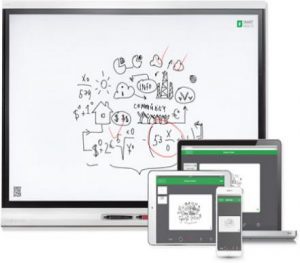Interactive flat panel display is the new hype in the world, and not just in the business sector but also education. Various schools and universities are actively opting for this new mechanism to enhance the system of teaching they have.
If you are an educator wanting to purchase this technology too, here are a few factors that you need to consider before you go forth with the purchase –

- Assess your needs
The first thing that you should bear in mind when searching out an interactive flat panel is your needs. Ask yourself if this device helps meet some specific needs in your classroom environment. With a large Interactive flat panel display, you get to present text-heavy slides and web pages seamlessly, alongside enhancing interaction among the students during studies, through it.
- LCD or LED
LCD or Liquid Crystal Displays come with backlighting which means they have a light source fitted behind to aid in picture visibility. LCD backlighting is of two types, namely light emitting diodes or LEDs and cold-cathode fluorescent lamps or CCFLs. Now the thing with LEDs is that they have greater contrast which helps produce better images, also they consume less power in comparison to CCFLs. So decide accordingly when making your purchase.
- UHD or 4K vs. HD
4K, UD, UHD are ultra-high-definition TV displays and the number of pixels that they have is four times that of HD or high-definition. And even though UHDs cost more than HDs the fact that they create more beautiful images cannot be overlooked.
So when you decide to go forth with your decision to purchase an interactive flat panel display, you need to weigh the benefit that those extra resolutions shall fetch against its costs.
- Screen size in association to classroom size
The size of the screen you decide to invest in has a lot to do with the size of your classroom. When buying a display what you must look for, is a screen size that offers easy visibility and readability from the farthest corner of your classroom.
Generally, a 70-inch display does so for a distance of 17.5 feet and an 84-inch display serve students well for a max distance of 21 feet. So, keep this equation in mind, and figure out if the screen you are considering, offers the best view for your classroom size and seating arrangement.
- Classroom software that meets your needs
Although interactive flat panels aid you in showcasing videos, images, animation and other collaborative activities to you class, what you must actually focus upon is the software. It is after all the software which actually enables the hardware for an interactive classroom.
A few things that you need to check out in this respect are the required features, user-friendliness, language available for the user interface, flexibility for usage, and so on.
- Connection Types and Why They Matter
An interactive flat panel display allows three major connections which include two HDMIs and a VGA. The HDMI cables are responsible for carrying audio and video digitally, simplifying wiring and offering higher quality over longer lengths of cables in comparison to analogue VGA signal.
Since VGA inputs do not carry audio and video, you might need a corresponding stereo analogue input.
- It’s more than just the Picture
Interactive flat panel displays come equipped with internal speakers and in-built audio amplifier. These features make them fit for serving a classroom efficiently. The lack of these aspects would mean an external system for you which will add to your costs and the also make the resulting system more complex.
- Interactivity in the Classroom
The image size, resolution, audio quality, quality of picture, selection of audio-video inputs and outputs are all significant considerations which you need to make when choosing to purchase an interactive flat panel display for your classroom. However, in addition to that, you also need to ascertain the number of single and dual touch panels that the room can accommodate without looking cluttered.
Purchasing an interactive technology requires good planning. Therefore, taking the above-mentioned into consideration will help ensure that you get to maximize benefits out of the purchase you make.